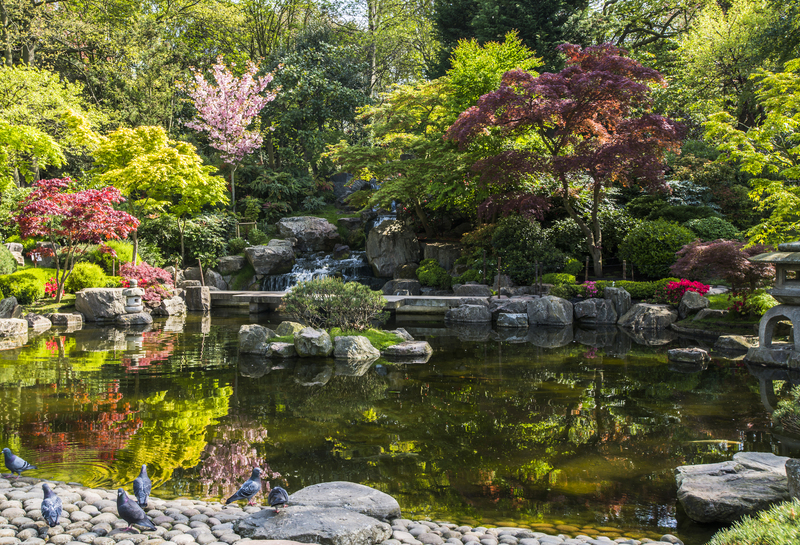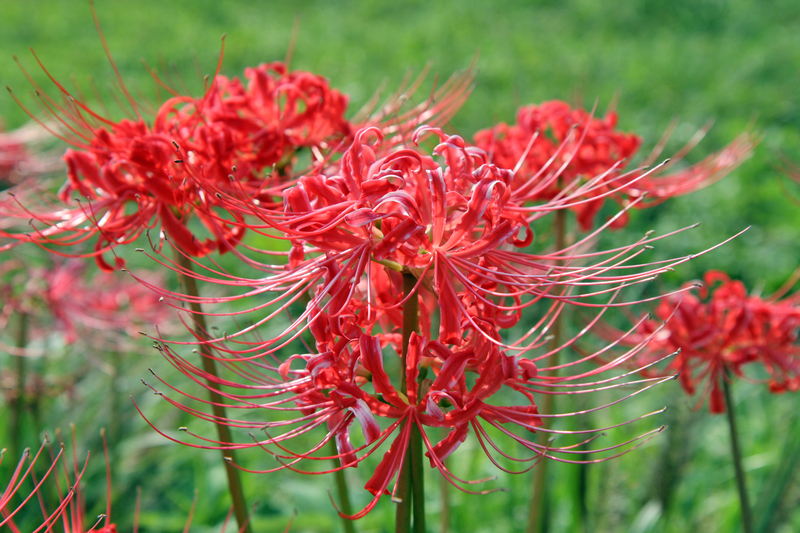Rich Green Climbers: Perfect for Your Shadowed Gardens
Posted on 24/05/2025
Rich Green Climbers: Perfect for Your Shadowed Gardens
If you have a garden that is often overshadowed by trees or structures, finding the right plants can be a challenge. However, rich green climbers can bring life and beauty to those dimly lit areas while thriving in limited sunlight. In this article, we will explore some of the best climbing plants for shaded gardens, their unique features, and tips on how to care for them.
Why Choose Rich Green Climbers for Shaded Areas?
Rich green climbers are an excellent choice for shadowed gardens for several reasons:
- Adaptability: Many climbers are exceptionally adaptable and can flourish in low-light conditions.
- Visual Appeal: These plants add vertical interest, vibrant greenery, and visual depth to your garden.
- Space-Saving: Climbing plants can cover walls, trellises, and fences, maximizing garden space.
- Ecological Benefits: They provide habitat for various species, including birds and beneficial insects.
Top Rich Green Climbers for Shaded Gardens
Now, let's delve into some of the best rich green climbers that you can incorporate into your shadowed gardens.
1. Climbing Hydrangea (Hydrangea anomala petiolaris)
This beautiful vine is a popular choice for shaded areas due to its ability to thrive in partial to full shade. The climbing hydrangea produces stunning white blooms in early summer, creating a striking contrast against its rich green foliage.
- Height: Can grow up to 50 feet if supported properly.
- Soil: Prefers moist, well-drained soil.
- Maintenance: Requires little maintenance once established.
2. Boston Ivy (Parthenocissus tricuspidata)
Boston Ivy is a classic choice for shaded environments. This vigorous climber is known for its ability to cling to surfaces, making it a great option for walls and fences.
- Height: Can grow up to 50 feet tall.
- Seasonal Interest: Foliage turns a beautiful red in the fall.
- Care: Very low maintenance and drought-tolerant once established.
3. Sweet Autumn Clematis (Clematis terniflora)
This fragrant climber is perfect for shaded areas and offers beautiful white flowers that bloom in late summer. It's a fast-growing vine that can quickly cover unsightly structures.
- Growth Rate: Fast-growing and can reach heights of up to 30 feet.
- Sun Preferences: Thrives in partial shade.
- Aroma: Produces sweet-smelling blooms that attract pollinators.
4. English Ivy (Hedera helix)
With its lush, evergreen leaves, English Ivy is a hardy climber that excels in shady areas. It's often used for ground cover but can also be trained to climb walls, providing year-round greenery.
- Growth Habit: Climbing or sprawling habit depending on how it's trained.
- Care: Tolerant of various soil types and requires minimal care.
- Environmental Benefit: Acts as a natural air purifier.
5. Wisteria (Japanese Wisteria, Wisteria floribunda)
While typically associated with sunnier spots, some varieties of wisteria can tolerate partial shade, particularly in cooler climates. The cascading flowers create a breathtaking display in early spring.
- Height: Can reach lengths of 30 feet or more.
- Flowering Time: Blooms in spring with stunning purple or white flowers.
- Support: Needs a solid structure to climb.
How to Care for Your Rich Green Climbers
Proper care is crucial to ensure your rich green climbers thrive in your shadowed gardens. Here's what you need to know:
Soil Requirements
Most climbing plants enjoy well-drained, nutrient-rich soil. Before planting, amend your soil with organic matter such as compost or well-rotted manure to provide essential nutrients.
Watering
Regular watering is important, especially during the first year as your plants establish roots. Ensure the soil remains moist but not soggy. Deep watering is recommended every week during dry spells.
Pruning
Pruning helps maintain the shape of your climbers and encourages healthy growth. Most climbers respond well to being trimmed at the end of their flowering period, promoting bushier growth and more blooms the following season.
Supporting Structures
Ensure that your climbing plants have adequate support. This can include:
- Trellises: Wooden or metal structures that provide a framework for climbing.
- Walls: Many climbers can attach directly to wall surfaces using their natural adhesive clinging ability.
- Fences: Perfect for growing vines, creating a more green and refreshing environment.
Tips to Maximize Growth in Shaded Areas
To help your rich green climbers flourish in shadowed gardens, consider the following tips:
1. Choose the Right Plants
Select climbers known for their ability to tolerate shade. Research varieties suited for your hardiness zone to ensure successful growth.
2. Positioning
When planting, consider the amount of sunlight different areas of your garden receive throughout the day. Place plants that require slightly more light in areas with better exposure while opting for shade-loving varieties in darker corners.
3. Fertilization
During the growing season, apply a slow-release fertilizer to support growth. Look for options specifically formulated for flowering plants to encourage blooming.
4. Monitor for Pests
Keep an eye out for pests and diseases that may affect your rich green climbers. Common pests include spider mites and aphids. Use insecticidal soap or neem oil if infestations occur.
Conclusion
Transforming your shadowed gardens with rich green climbers is not only possible but can result in a stunning green haven. By choosing the right plants tailored for low-light conditions, you can create a vibrant oasis that adds beauty and charm to your outdoor space. Invest time in caring for your climbers, and watch them flourish, bringing life and serenity to the shady corners of your garden.
Explore the beauty of rich green climbers and let them elevate your shadowed gardens!



